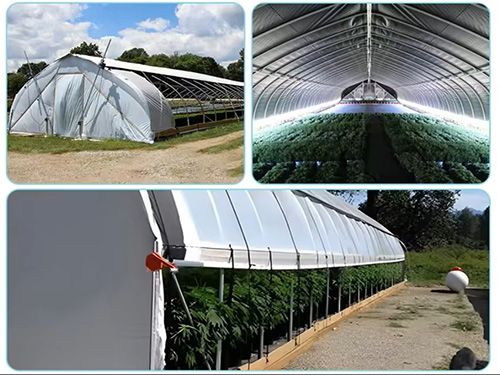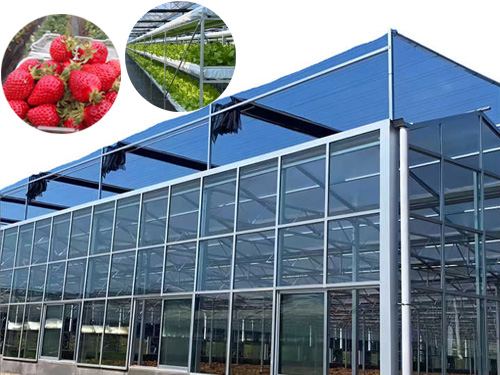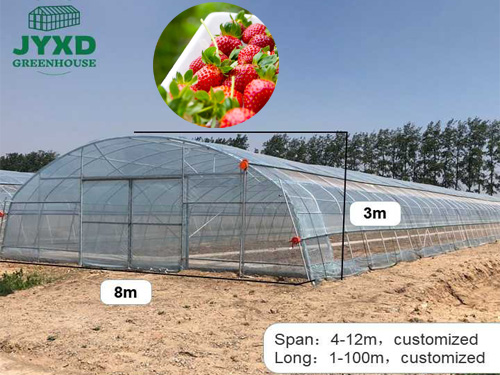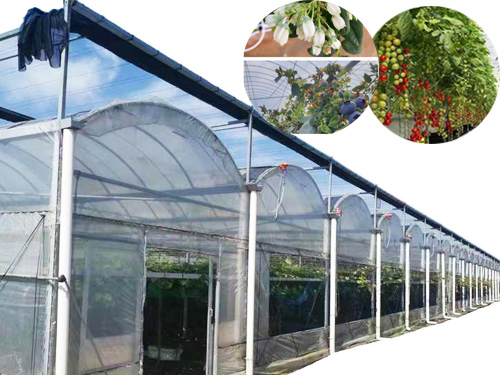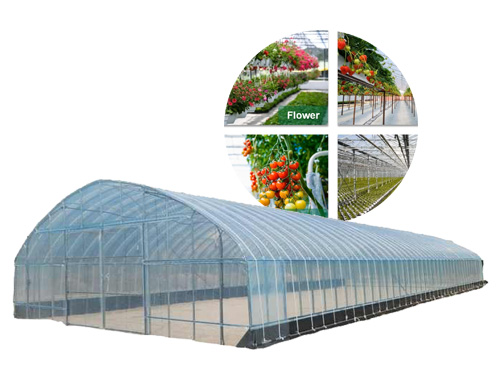NEWS DETAILS
NEWS INFORMATION
How to Optimize Greenhouse Plant Density: Spacing Calculators for 20% Yield Increase
AUTHOR:jyxd-greenhouse DATE:2025-04-02 15:27:54 HITS:103
Optimizing plant density in a greenhouse is a critical factor in maximizing yields and ensuring healthy plant growth. Proper spacing allows plants to access adequate light, nutrients, and airflow, reducing competition and preventing disease. By using spacing calculators and strategic planning, growers can achieve a 20% yield increase while maintaining optimal growing conditions. This article explores how to optimize greenhouse plant density and introduces tools like spacing calculators to help you get the most out of your greenhouse space.
Why Plant Density Matters in Greenhouses
Plant density directly impacts the health, growth, and productivity of your crops. Overcrowding can lead to:
· Reduced light penetration and photosynthesis.
· Increased competition for water and nutrients.
· Poor airflow, which promotes fungal diseases and pest infestations.
· Stunted growth and lower yields.
On the other hand, underutilizing space can result in wasted resources and reduced profitability. Finding the right balance is key to maximizing greenhouse efficiency.
1. Understanding Plant Spacing Requirements
Each crop has unique spacing requirements based on its growth habits, root system, and light needs. Here are some general guidelines:
Leafy Greens (e.g., Lettuce, Spinach):
· Spacing: 6-12 inches apart.
· Reason: These plants have shallow roots and require less space.
Vining Crops (e.g., Tomatoes, Cucumbers):
· Spacing: 18-36 inches apart.
· Reason: Vining plants need room for trellising and airflow.
Root Vegetables (e.g., Carrots, Radishes):
· Spacing: 2-4 inches apart.
· Reason: Root crops require space for underground growth.
Bushy Plants (e.g., Peppers, Eggplants):
· Spacing: 12-24 inches apart.
· Reason: These plants need space for lateral growth and light exposure.
2. Using Spacing Calculators for Precision
Spacing calculators are invaluable tools for optimizing plant density. They help growers determine the ideal number of plants per square foot or square meter based on crop type and greenhouse dimensions.
How Spacing Calculators Work:
· Input Data: Enter the greenhouse dimensions, crop type, and desired spacing.
· Output: The calculator provides the optimal number of plants and their arrangement.
Benefits of Spacing Calculators:
· Maximize Space: Ensure every inch of the greenhouse is utilized efficiently.
· Improve Yields: Optimize plant density for healthier growth and higher productivity.
· Reduce Waste: Minimize resource use by avoiding over- or under-planting.
Popular Spacing Calculators:
· Greenhouse Spacing Calculator by Growers Edge: A user-friendly tool for various crops.
· Plant Spacing Calculator by Johnny’s Selected Seeds: Offers detailed recommendations for vegetables and herbs.
· Customizable Spreadsheets: Create your own calculator using Excel or Google Sheets for specific needs.
3. Strategies for Optimizing Plant Density
Beyond using spacing calculators, these strategies can help you achieve the ideal plant density:
Vertical Gardening:
· Use trellises, shelves, or hanging baskets to grow vertically, maximizing space for vining or trailing crops.
Succession Planting:
· Plant fast-growing crops (e.g., radishes) alongside slower-growing ones (e.g., tomatoes) to utilize space effectively.
Intercropping:
· Pair complementary crops (e.g., lettuce and basil) to optimize space and resources.
Adjustable Spacing:
· Use movable planters or modular shelving to adjust spacing as plants grow.
4. Benefits of Optimized Plant Density
Optimizing plant density offers numerous advantages:
· Increased Yields: Proper spacing can boost yields by up to 20%.
· Healthier Plants: Adequate light, airflow, and nutrients reduce stress and disease.
· Resource Efficiency: Maximize water, fertilizer, and energy use.
· Higher Profitability: More plants per square foot translate to greater revenue.
5. Case Study: Achieving a 20% Yield Increase
A commercial greenhouse in the Netherlands implemented spacing calculators and vertical gardening techniques for their tomato crop. By optimizing plant density and using trellises, they achieved:
· 20% Higher Yields: Increased tomato production without expanding the greenhouse.
· Reduced Disease: Improved airflow minimized fungal infections.
· Lower Costs: Efficient spacing reduced water and fertilizer use.
6. Best Practices for Plant Density Optimization
To get the most out of your greenhouse space, follow these best practices:
· Plan Ahead: Use spacing calculators during the planning phase to determine plant numbers and arrangement.
· Monitor Growth: Adjust spacing as plants grow to prevent overcrowding.
· Rotate Crops: Avoid planting the same crop in the same spot to reduce disease risk.
· Experiment: Test different spacing configurations to find what works best for your greenhouse.
Conclusion
Optimizing greenhouse plant density is a proven way to increase yields, improve plant health, and maximize resource efficiency. By understanding spacing requirements, using spacing calculators, and implementing strategic planting techniques, growers can achieve a 20% yield increase while maintaining optimal growing conditions. Whether you’re a small-scale grower or a commercial operation, these strategies will help you make the most of your greenhouse space.
For more expert tips and high-quality greenhouse tools, visit our website and take your cultivation practices to the next level. Let’s grow smarter and cultivate a greener future together!
![]()
Meta Description: Learn how to optimize greenhouse plant density using spacing calculators for a 20% yield increase. Discover strategies for maximizing space, improving plant health, and boosting productivity.
Hebei Juyou Xinda Greenhouse Facilities Co.,Ltd.
Copyright © 2024-2025 https://www.jyxd-greenhouse.com. All Rights Reserved Hebei Juyou Xinda Greenhouse Facilities Co.,Ltd.Copyright





 Current Location:
Current Location:


